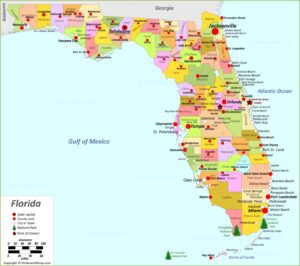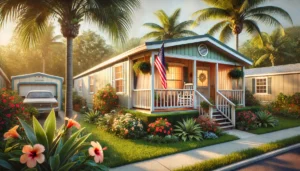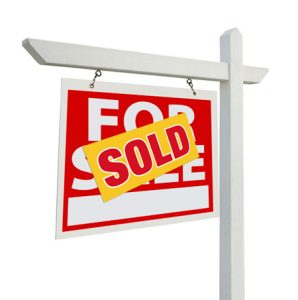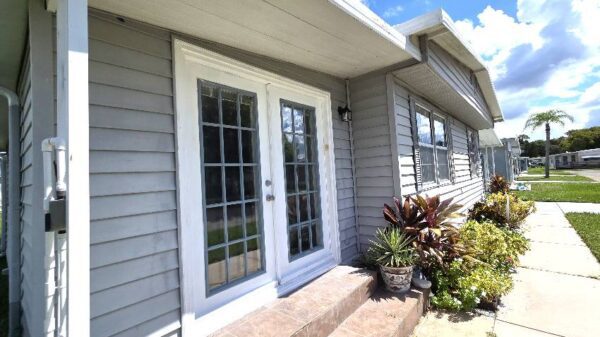Florida is a beautiful place to live, especially for owners of mobile or manufactured homes, but it’s also a state with unique risks—hurricanes, flooding, high windstorms, and more. That means insurance is not just a “nice to have,” it’s essential. Selecting the right insurance policy for your mobile home in Florida can protect your investment, give peace of mind, and even be required by lenders or communities. Below is a deep dive into everything to understanding mobile home insurance in Florida.
Table of Contents
What Is Mobile or Manufactured Home Insurance?
“Mobile home insurance” (often called manufactured home insurance) is a specialized kind of homeowners-insurance policy designed for homes that are either built in a factory and transported to the site, or built in modules and placed on either permanent or temporary foundations. These differ from traditional “site-built” homes in structure, in how they respond to weather, in certain code and construction standards, and in how insurers view risk.
In Florida, a mobile home built after June 15, 1976 qualifies as a manufactured home under the U.S. Department of Housing and Urban Development (HUD) code. Homes older than that may not meet current HUD standards and could face more limited insurance options or higher premiums. Insurance 101: How to Properly Insure Your Manufactured Home
What Mobile Home Insurance Coverage Typically Includes
A solid mobile home insurance policy in Florida protects not just your home, but also your belongings, your liability, and your ability to recover if disaster strikes. Understanding each coverage type helps you choose the right protection — and ensures you’re not caught off guard when filing a claim.
Here’s what each major coverage area usually includes:
1. Dwelling Coverage
Dwelling coverage is the heart of your policy. It pays to repair or rebuild your mobile home if it’s damaged or destroyed by a covered peril such as fire, wind, hail, lightning, vandalism, or theft.
In Florida, this is especially important because the state faces high risks from hurricanes, tropical storms, and wind-driven rain. If your mobile home is anchored or tied down, make sure your insurance company knows — properly secured homes often qualify for better coverage and lower premiums.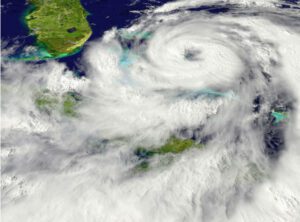
Dwelling coverage generally applies to:
-
The main structure of your mobile home (walls, roof, flooring, and foundation)
-
Built-in fixtures and systems (electrical wiring, plumbing, HVAC)
-
Permanently attached features like decks, awnings, or screened porches
Your policy’s dwelling limit should reflect the full replacement cost of your home — not just its market value. In other words, make sure your insurance would cover rebuilding your home from the ground up, including labor and materials, if it were destroyed in a storm. Understanding Mobile Home Insurance in Florida
2. Personal Property Coverage
Your mobile home isn’t just the structure — it’s everything inside that makes it your home. Personal property coverage protects your belongings if they’re damaged, stolen, or destroyed by a covered event.
This includes items such as:
-
Furniture and décor
-
Clothing and shoes
-
Kitchen appliances and cookware
-
Electronics, TVs, and computers
-
Tools, lawn equipment, and sports gear
Most policies cover these items at actual cash value (the item’s depreciated worth), but you can often upgrade to replacement cost coverage. This means if your couch, TV, or laptop is lost in a storm, your insurer will pay to replace it with a brand-new one — not what it was worth after years of use.
Keep an up-to-date home inventory with photos and receipts whenever possible. It makes filing a claim faster and smoother, especially after a hurricane or break-in.
3. Liability Coverage
Accidents happen — and when they do, liability coverage protects your finances.
If a visitor is injured on your property, or if you accidentally damage someone else’s property, this coverage helps pay for:
-
Medical bills
-
Legal fees and court costs
-
Settlements or judgments against you
For example:
-
A guest slips on a wet deck and breaks their wrist.
-
Your child hits a baseball through the neighbor’s window.
-
A repair contractor trips on a loose step and sues for damages.
Standard policies offer liability limits starting around $100,000, but in today’s world, many homeowners choose higher limits ($300,000–$500,000) for stronger protection.
If you own multiple properties, have significant savings, or host guests frequently, consider adding an umbrella policy to extend your liability coverage even further.
4. Loss of Use / Additional Living Expenses (ALE)
When disaster strikes, sometimes the biggest cost isn’t the damage itself — it’s being displaced from your home.
If your mobile home becomes uninhabitable due to a covered event (like a hurricane, fire, or windstorm), your Loss of Use or Additional Living Expense (ALE) coverage helps pay for:
-
Temporary housing (hotel, rental home, or apartment)
-
Meals or food costs above your normal spending
-
Laundry and transportation expenses
-
Pet boarding, if applicable
For example, if your roof is damaged during a storm and repairs take three weeks, ALE can help cover your hotel stay and meals during that period.
This coverage ensures you and your family can live safely and comfortably while your home is being repaired — without draining your savings.
5. Other Structures Coverage
If your property includes more than just your home, other structures coverage extends protection to those outbuildings and fixtures.
This typically includes:
-
Sheds or workshops
-
Detached garages
-
Carports and covered parking
-
Fences and gates
-
Gazebos, decks, or storage buildings
The coverage limit for other structures is usually 10% of your dwelling coverage. For instance, if your home is insured for $100,000, you’d have up to $10,000 for detached structures.
Because Florida weather can be unpredictable, this coverage is essential for anyone with valuable outdoor storage or vehicles kept under carports. Always check that your policy includes wind and hail coverage for these structures — some insurers exclude them unless specifically added.
Bringing It All Together
Together, these five coverages form the foundation of your mobile home insurance policy:
| Coverage Type | What It Protects | Common Examples |
|---|---|---|
| Dwelling | The home itself | Roof, walls, built-in fixtures |
| Personal Property | Your belongings | Furniture, electronics, clothing |
| Liability | Legal and medical costs | Guest injury, property damage |
| Loss of Use / ALE | Temporary living costs | Hotels, meals, rentals |
| Other Structures | Detached items on your lot | Sheds, fences, carports |
But some typical homeowner policy perils may be excluded, or only available as add-ons. Flood insurance, for example, is generally not included in standard policies. In Florida where flooding is a real threat, that’s a serious consideration.
Why Florida’s Risk Environment Makes Insurance Different
Several features of Florida create insurance challenges (and therefore influence cost and policy design) for mobile and manufactured homes:
-
Hurricanes and High-Wind Events
Coastal areas especially are at risk for severe wind, storm surge, and hurricane damage. Because mobile homes tend to be more exposed, insurers often require extra windstorm/wind mitigation measures (tie-downs, reinforced roofs, impact windows) and may charge higher premiums. Some policies also carry high hurricane deductibles (percentage-based rather than flat dollar amounts). -
Flooding Risk
Florida’s low elevation, frequent heavy rains, and storm surges mean that flood risk is elevated across many counties. Most standard policies don’t cover flood damage, so separate flood insurance is often necessary. Proximity to flood zones (as mapped by FEMA, etc.) strongly affects cost. Helping Understanding Mobile Home Insurance in Florida -
Sinkholes & Soil Conditions
Florida has geological conditions in many areas (like karst limestone) that contribute to sinkhole risk. Some mobile home insurance policies include mandatory sinkhole coverage.
-
Age, Construction, and Foundation Standards
Newer manufactured homes built to HUD standards (post-1976) tend to get better rates. Homes with older construction, or without proper anchoring, skirt/undercarriage, or meeting current code requirements, often face greater risk and thus higher premiums. Florida has specific insurance requirements around manufactured home foundation anchorage and installation. -
Local Regulations and Insurance Availability
Some private insurers limit exposure in high-risk zones or avoid certain ZIP codes or counties. As a result, some homeowners must use state-backed or “last-resort” insurers. Also, mortgage lenders often require certain minimum coverages (including wind, replacement cost, etc.). Communities and mobile home parks may also have their own insurance mandates.
How Much Does Mobile Home Insurance Typically Cost in Florida?
Knowing cost averages helps you plan. But be aware: there’s a very wide range depending on many factors.
-
The statewide average cost is around $112/month or about $1,349 per year for a policy that includes wind coverage. Without wind coverage, the cost drops sharply.
-
Basic policies (with minimal coverage, no wind or flood) might run $300-$600/year for older or smaller homes, especially if inland. For more comprehensive coverage in coastal areas, expect premiums between $1,200-$2,000+ per year or even higher depending on location and size.
-
Counties closer to the coast tend to have much higher premiums. For example, Naples has been reported to average about $1,500 per year in many cases. ZIP code matters a lot.
Here are some typical variables that make your cost go up or down:
| Factor | Tends to Increase Premium | Tends to Decrease Premium |
|---|---|---|
| Proximity to coast or high-risk flood or hurricane areas | Homes further inland, away from the coast or flood zones | |
| Older home or non-HUD code construction | Newer homes built to modern standards | |
| Windstorm/hurricane coverage required | Higher deductible or forgoing optional add-ons (but risky) | |
| Low deductible, high replacement value, lots of covered add-ons | Higher deductible, basic replacement value coverage | |
| Poor maintenance, lack of mitigation (no shutters, weak foundation) | Well-maintained with storm protection and tie-downs |
